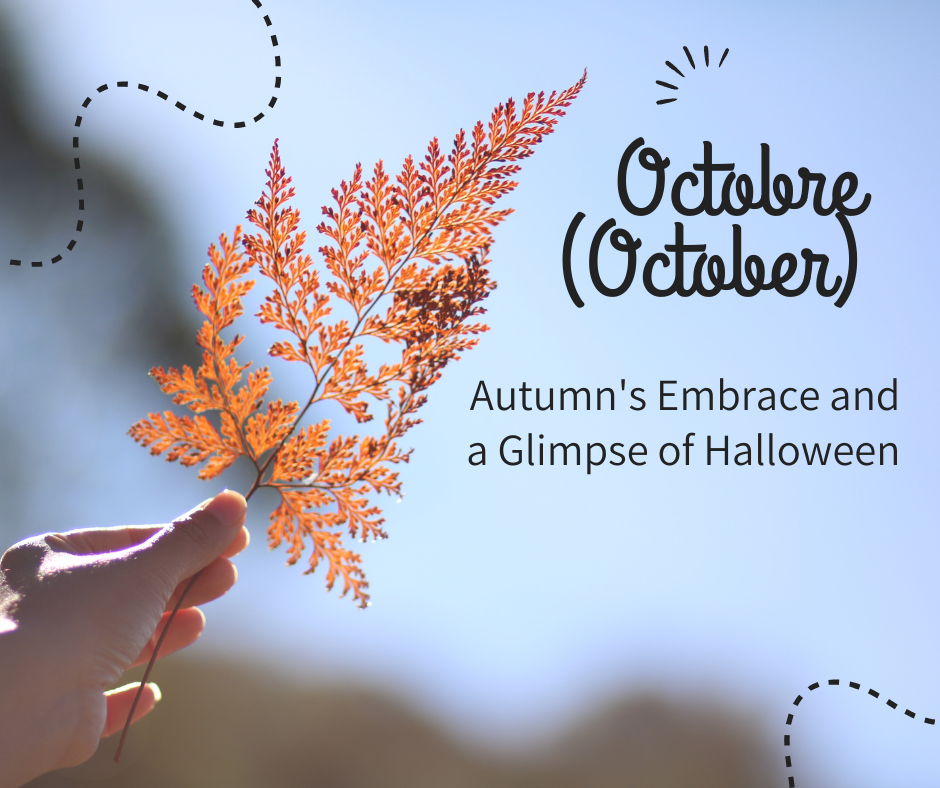Mark Twain once quipped, “The coldest winter I ever saw was a summer in San Francisco.” Fluency in the months is necessary to understand the seasons and plan your adventures in France! Whether you dream of springtime strolls along the Seine or cozy winter evenings by a crackling fireplace in the French countryside, knowing the months will unlock a world of possibilities.
Understanding the months in French is not just a linguistic exercise; it’s a practical necessity. Whether planning a trip, scheduling events, or simply looking to broaden your language skills, knowing the months is crucial. And if you already speak English, Spanish, or Italian, you’re in luck! These languages share similarities with French, making your learning journey even smoother. Let’s dive in and discover the months in French together.
Months in French – Learn Like a Pro
Have you ever found yourself stargazing on a crisp Parisian night and struggling to recall the French word for ‘August’? Or perhaps you wanted to impress your boulanger (baker) with a birthday wish in French, but ‘November’ slipped your mind? Fear not; equipping yourself with the French months is an essential skill, and it’s surprisingly straightforward for English, Spanish, and Italian speakers.
With some practice, these months will roll off your tongue as effortlessly as ordering a “pain au chocolat” (chocolate croissant).
So, why not start incorporating the French months into your daily routine? Ask your friends “Quel est ton mois préféré?” (What is your favorite month?) or talk about upcoming holidays. The more you encounter and use them, the more comfortable and confident you’ll become.
Janvier (January): Bonjour, New Year!
January, or “janvier” in French, marks the fresh start of the year. Just like in many cultures worldwide, France ushers in the new year with joyous celebrations. On “le Jour de l’An” (New Year’s Day), a public holiday, festivities abound. Family gatherings, delicious meals, and exciting fireworks paint the town as everyone rings in the new year with hope and merriment.
This day is cherished across France, as it symbolizes new beginnings and fresh opportunities, much like in many other parts of the world. People come together, celebrate, and embrace the year’s promise with optimism and enthusiasm.
Février (February): A Short Month Steeped in Tradition
February, or “février” in French, is a unique month in the calendar. Unlike others, it has only 28 days, with an extra day appearing every four years during a leap year. But what “février” lacks, it makes up for in charm and tradition.
February 14 transforms into a celebration of love with “la Saint Valentin” (Valentine’s Day). Romance fills the air as couples express affection through chocolates, flowers, and romantic gestures.
February 2 brings a delightful tradition – “La Chandeleur” (Candlemas). Homes across France transform into crêpe havens as families and friends gather to indulge in these delicious, thin pancakes. Legend has it that the success of the first crêpe can predict the quality of the year’s harvest! So next February 2, flip your crêpe flawlessly for good luck.
Mars (March): Bonjour, Spring! A Touch of Rainbows and Roman History
In French, March is called “mars” and holds a fascinating historical significance. In the earliest Roman calendar, March was actually considered the first month of the year. It pays homage to Mars, the revered Roman God of war. In modern France, March signifies the arrival of spring, a season of renewal and rebirth. However, amidst the blossoming flowers and warming temperatures, France experiences what is known as “les giboulées de mars” – long days of rain showers. These spring showers nourish the earth, sustaining the country’s vibrant growth of flora and fauna.
Avril (April): Showers and Fun Mischief
April, or “avril” in French, brings the delightful promise of spring. Blossoms peek out from branches, and a sense of renewal fills the air.
It also brings with it a touch of playful mischief. April 1 is widely recognized as April Fools’ Day, when pranksters delight in pulling harmless tricks on their friends and family, only to exclaim, “April Fools!” afterward. Just like many cultures worldwide, France celebrates April Fools’ Day. It’s known as “le poisson d’avril,” meaning “April fish.” The tradition involves playfully attaching paper fish to the backs of unsuspecting friends, family, or even colleagues. So, if you find a fishy friend on April 1, don’t be surprised – it’s just a lighthearted way to usher in the spring season with a giggle!

Mai (May): Spring Symphony
May, or “mai” in French, is a month that represents vibrant spring. The land explodes with color as flowers bloom in abundance, and the days are longer, inviting leisurely strolls and outdoor adventures. But “mai” also marks a significant social celebration. On May 1, France joins hands with many nations around the world to celebrate “la Fête du Travail” (International Workers’ Day). Parades, demonstrations, and social gatherings mark this day, honoring workers’ contributions and advocating for workers’ rights. So, if you’re in France on May 1, celebrate worker’s progress and spring’s beauty.
Juin (June): Bonjour, Summer! Sun, Solstice, and Summer Holidays
In the French calendar, June is known as “juin,” marking the onset of summer. Derived from the Latin word “junius,” June holds a special place as the sixth month in the Gregorian calendar. One of the defining features of June is the arrival of the summer solstice. It is typically around June 21, the longest day of the year. As the sun shines its brightest, June envelops France in warmth and light, signaling the beginning of the summer season. For students, it’s the joyous prelude to summer vacation, a time for carefree adventures and relaxation. But some students need to prepare for end-of-the-year exams. So, “juin” promises a month filled with its unique blend of energy and excitement.
Juillet (July): Bastille Day Fireworks and Fragrant Traditions
July is known as “juillet” and holds profound historical significance for the nation. One of the most pivotal events in French history occurred on July 14, 1789, known as the storming of the Bastille. This courageous act marked a turning point in the French Revolution, symbolizing the people’s struggle against tyranny and oppression and ultimately leading to the country’s independence. July 14 is celebrated as Bastille Day, a national holiday in France to commemorate this historic event. Another neat tradition goes along with Bastille Day. People in France give each other small bouquets of lily of the valley flowers, called “le muguet.” These little white flowers are a symbol of good luck and happiness. There’s a story that a perfumer in Paris first started giving these flowers to workers on May 1, but over time, the tradition moved to July 14.

Image by Kohji Asakawa from Pixabay
Août (August): Sun, Storms, and Vacation Time
In French, August is known as “août,” and it’s a month that brings both scorching heat and occasional storms, especially in the southern parts of France.
August holds a special place in many French people’s hearts as it’s when most take their vacations. It’s a month for relaxation, with streets becoming quieter as businesses close and people head off to enjoy the summer sun in the countryside or by the coast.
August is part of students’ summer break, allowing them to continue having fun and making the most of their time away from school.
On August 15, France observes the Assumption (L’Assomption), an important religious celebration for many Catholics. Like Christmas and other significant holidays, the Assumption is a public holiday, offering a day for religious observance and leisure activities.
Septembre (September): A Farewell to Summer, Bonjour Autumn
In the French calendar, September is known as “septembre,” which signifies the transition from summer to autumn.
For many in France, September marks the end of the summer vacation period. It’s a time when families return from holidays, students bid farewell to holidays, and everyone prepares to resume their regular routines. Schools reopen their doors, welcoming students back for the start of the academic year after the annual summer break.
It’s a time of excitement and anticipation for students as they reunite with friends, meet new teachers, and embark on new educational journeys. For adults, September often signals a return to work after vacation.
Octobre (October)- Autumn’s Embrace and a Glimpse of Halloween

In French, October is called “octobre,” and while it’s not as widely celebrated in France as in English-speaking countries, it still has its own charm.
One thing that stands out in October is Halloween, celebrated on the 31st. Though it’s not as big as in some places, Halloween is becoming more popular in France, especially among kids. They dress up in spooky costumes like ghosts or vampires and go door-to-door, saying “Trick or treat!” for candies.
Beyond the fun, Halloween also has cultural significance as a time to remember the dead. Halloween celebrations in France have grown recently, with parties, decorations, and haunted houses adding to the excitement.
Novembre (November): A Touch of Winter and a Day of Remembrance
November marks the arrival of winter in France, with shorter days and cooler temperatures. The days grow shorter, and the air crisper, signaling the approach of winter—pack layers of clothing to adapt to the changing weather patterns.
On November 11, France observes Armistice Day (L’Armistice), a national holiday commemorating the end of World War I. Ceremonies are held throughout the country to honor those who lost their lives in the war, and many public buildings will be adorned with the French tricolor flag. In addition to Armistice Day, November in France is a time for cozy gatherings, hearty meals, and preparations for the upcoming winter.
Décembre (December)- A Season of Enchantment and Christmas Cheer
December in France transforms into a magical wonderland, shimmering with festive lights and brimming with Christmas spirit. It’s a month known for its most beloved celebration: Christmas, or “Noël.”
Christmas (the birth of Jesus Christ) is celebrated on December 25. In France, it’s a time for families and friends to come together and share the season’s joy. Homes are decorated with lights, and delicious meals are enjoyed around the table.
Throughout December, there’s a sense of anticipation and excitement as people prepare for Christmas Day. They exchange gifts, attend church services, and partake in festive traditions. December also heralds the arrival of winter. It’s a month filled with warmth, love, and the spirit of giving, making it a cherished time for many in France.

Takeaway
From the vibrant hues of summer in July to the festive spirit of December, each month in France offers a unique charm. It does not matter if you’re captivated by the long, sun-drenched days of August or intrigued by the historical significance of November’s Armistice Day, there’s always a reason to discover the magic of France throughout the year. French-language learners will appreciate the French calendar.


 April 20, 2024
April 20, 2024  10 Min
10 Min  No Comment
No Comment 



